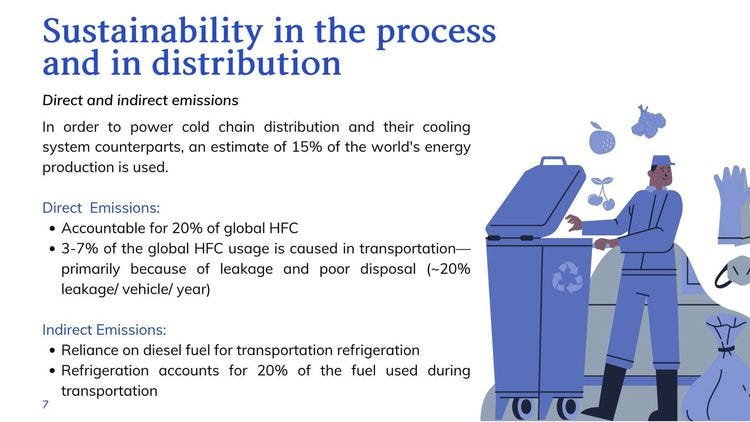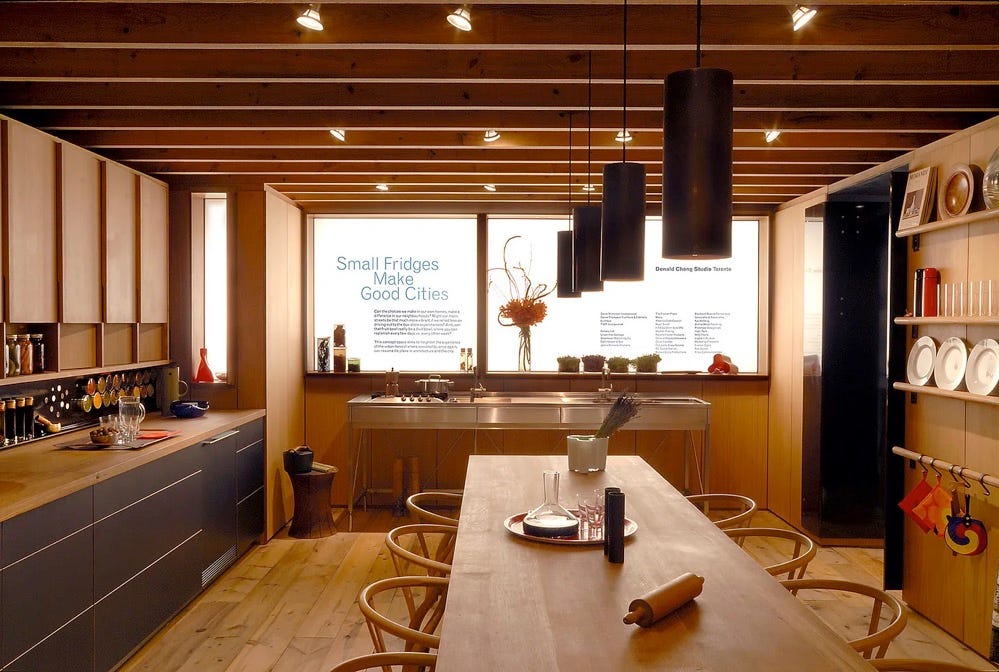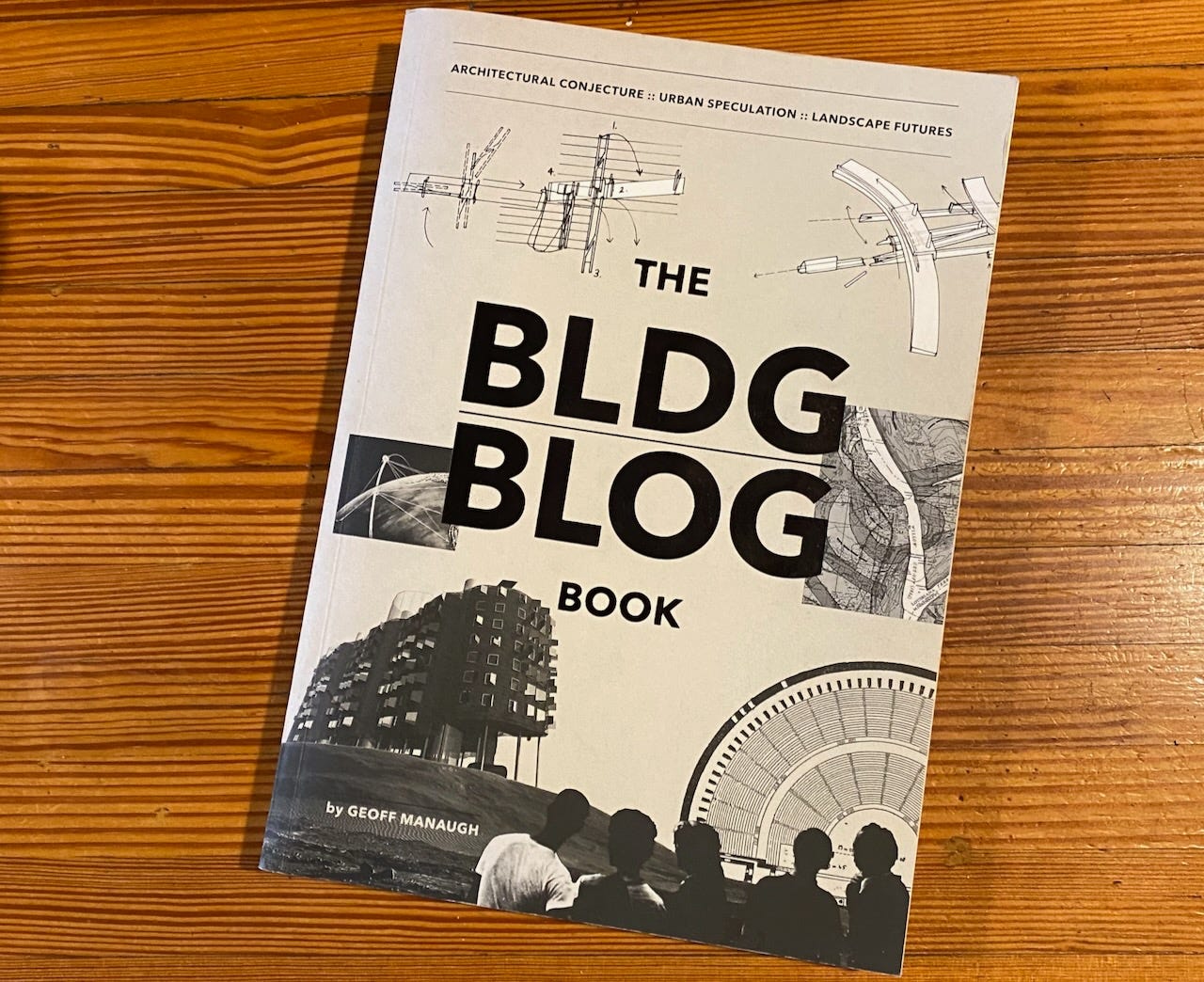Reading Frostbite: How refrigeration changed our food, our planet, and ourselves
This is the book I have been waiting for. Almost.
Back in 2007, I saw a model kitchen designed by Donald Chong at the Interior Design Show titled “Small fridges make good cities.” Ever since, I have been obsessed with food and fridges. Fifty or so years ago, my first summer job was working for my dad’s shipping container manufacturing and leasing company; I was sent down to Toronto’s stockyards to see how a big client, Canada Packers, packed those offal parts of cows that Canadians wouldn’t eat and shipped them in reefers (newfangled refrigerated containers) to the Caribbean, where they were part of the local diet. This was my introduction to the cold chain, the incomprehensibly vast system that moves refrigerated food around the world. Our home fridge, small or large, is just a tiny coda in this chain.
So, I was excited to read Frostbite: How Refrigeration Changed Our Food, Our Planet, and Ourselves by Nicola Twilley. There is so much confusion about how we get our food, and in an era when we worry about the carbon emissions from everything from our AI servers to our airplanes, nobody has been talking about the cold chain. As Twilley notes,
“The cold chain—as the network of warehouses, shipping containers, trucks, display cases, and domestic fridges that keep meat, milk, and more chilled on their journeys from farm to fork is technically known—has become such an essential part of our food system that it is taken for granted.”
The domestic refrigerator, just a closet in the McMansion that is the cold chain, nevertheless has changed society. Twilley writes:
“Domestic space gradually reorganized itself around the refrigerator and so, too, did shops, cities, and daily lives. More and more American families drove their car to a self-service supermarket (which made its debut in 1916) and filled their shopping cart (introduced in the 1940s) with a week’s worth of food at a time, all of which could be stored in their ever-larger fridges. The relationship was symbiotic: refrigeration facilitated mass food production, enabled mass merchandising, and encouraged mass consumption.”
It’s not just fridges that made this all possible. There is the single-use packaging, including the finely tuned breathable plastic that makes bagged lettuce possible, the reefer trailer invented by Frederick McKinley Jones in 1935, (the first African-American to receive the National Medal of Technology) and Dwight D. Eisenhower’s National System of Interstate and Defense Highways. There is also the science of cooling, of understanding what happens in our food as it is chilled. Twilley describes how to handle the humble green bean:
“As soon as it is harvested, it is rushed to a packhouse to have its “field heat” removed: it is either run through a flume of cold water, known as a hydrocooler, or put in a forced-air chiller, where a gigantic fan pushes refrigerated air through stacked pallets of beans. These processes “precool” the bean, lowering its internal temperature from more than eighty degrees down to the low forties in just a couple of hours. After that, a bean can happily hang out in cold-storage facilities, travel in refrigerated trucks, and sit on chilled supermarket shelves for up to four weeks without losing its snap.”
Not only does the cooling process have to be reengineered, but the food itself has to be modified. Take the tomato, which I have been talking about for years, how tasteless and wooden it is when it is not eaten from the field. My wife Kelly, who used to write about food for the defunct Planet Green website, never buys hothouse or imported tomatoes, but cans bushels and bushels of them in August every year. For years while she was writing, we ate what Twilley might call a Muncie diet (we called it a 19th-century Ontario diet) that varied between winter (meat, root vegetables, preserved and canned vegetables) and summer, with its wealth of fruits and green vegetables. (More about our diet here) We are not so doctrinaire anymore and enjoy the occasional avocado, but we disagree with food chemist Harry Klee:
“The reality is, most people do not want to eat like Alice Waters,” Klee said, referring to the Bay Area chef known for her commitment to serving only local, seasonal produce. “No matter how bad the quality, people are still going to want to buy a tomato in January, and without refrigeration and postharvest handling, that’s impossible.”
Worldwide, we are just getting started. Twilley tells us that the United States has 5.5 billion cubic feet of refrigerated space, a third larger than Mount Everest from base to peak. But the rest of the world is just starting to catch up. China is rapidly refrigerating; only a quarter of its meat and 5% of its fruit and vegetables are refrigerated, compared to 70% of American food. “The Chinese race to refrigerate is far from over.”

Alas, Twilley didn’t answer the question that I have been trying to address for years: What is the true carbon footprint of the cold chain? She has a couple of enticing lines like “the chemicals and the fossil fuel energy used to refrigerate food already account for more than 2 percent of global emissions.” and “electricity for warehouses or diesel fuel for trucks already accounts for more than 8 percent of global electricity usage. (Cold-storage companies are currently the third highest industrial consumers of energy.)” But there are no footnotes, and even her marvellous selected sources section (perhaps the most thorough and entertaining that I have ever read) is little help here.
I continue to believe that the cold chain is a far bigger problem than most people, including experts like Hannah Ritchie of Our World in Data assume, and that modifying our diet to be more local and seasonal could make a dramatic difference in our emissions.
I am not suggesting that there is a conspiracy of silence here, but the Columbia Climate School says the cold chain is responsible for 2.5% of emissions, and the United Nations Environmental Program claims “the food cold chain is responsible for 4 percent of global greenhouse gas emissions, including from cold chain technologies and food loss and waste due to lack of refrigeration.”
These numbers are bigger than aviation, the internet, fertilizer production, and any number of other things that everyone worries about, which is why I believe we should be worrying more about our food choices than we do about ChatGPT.
For years, we have talked about food from farm to table, but rarely that big blank in between, the vast unknown that is the cold chain. As Twilley notes, it has changed our lives and our cities; we are no longer walking to the local greengrocer and butcher every day to get what is local and seasonal, but have big fridges, and big cars to drive to big box stores. We may complain about the taste of our tomatoes or orange juice, but we generally don’t have scurvy, rickets or food poisoning. But can we have too much of a good thing?
Nicola Twilley has written an entertaining, important, and incredibly well-researched book that explains it all; it is wonderful reading for a hot summer day, along with a nicely iced gin and tonic.
As an aside, I note that Twilley’s husband, Geoff Manaugh, came up with the title, edited the book, and froze with her in refrigerated warehouses. Manaugh started the website BldgBlog in 2004, the same year I started writing for Treehugger, way back in the early boom days of blogging. He profoundly influenced me; I desperately wanted to write like Geoff Manaugh. He wrote a book in 2009 that I still treasure. Such a talented family!
I have written so much about this subject on Treehugger, Mother Nature Network, and this substack, and for some reason, Treehugger hasn’t deleted it all. Here are links to some of my posts; Tomorrow, I will publish an excerpt from my book, Living the 1.5 Degree Lifestyle, where I discuss the carbon footprint of the cold chain.
How Did Our Fridges Get So Big?
From the archives: The big fridge, the big car, and the big grocery store are all part of one economic machine; in a sense, you cannot have one without the other two.
Small Fridges Don’t Make Good Cities; It’s More Accurate to Say That Good Cities Make Small Fridges.
“In much of North America we get the vicious circle where people drive big SUVs to the big box food store to fill up their big fridge because they don’t have the option. So all told, we get an obesity crisis, a food waste crisis and a carbon crisis; what a story our fridges can tell. And in the end, I find that small fridges don’t make good cities; it’s more accurate to say that good cities make small fridges. That's what we should be aiming for.”
Why Eating Local Makes a Difference in Your Carbon Footprint
In which I question the conventional wisdom on the impact of transportation on the carbon footprint of food. “I don't think we should ever say that food miles don't matter, because they add up too. I can't put a hard number on it, but local food still matters.”
Food-Miles Study Spotlights Why We Need Local Food Back on the Menu
“Farmland is continuing to be paved over for subdivisions, and those peri-urban zones are particularly at risk. Fuel is getting expensive, raising transport costs. Many places that our food comes from, like California, are running out of water. And eating a seasonal diet is probably almost as important as eating a local one; hothouse tomatoes may be grown up the road, but their footprint from natural gas heating the greenhouses is huge.”








The book does sound fascinating--I love big supply-chain or or history threads that trace a very specific thing (like salt, or garbage).
You set up an either/or dichotomy between the size of the home fridge and eating local foods and I need to say that isn't necessarily the ideological divide you make it.
For me eating local and growing a fair amount of produce and a lot of berries means having refrigerator and freezer space to store things until I can process them. Right now I'm in the season that's filling my full-sized freezer in the garage with rhubarb and berries, and it's still holding the last of the tomatillo crop I didn't turn into salsa verde last fall due to a kitchen remodeling project. Those things will likely get turned into jams and salsas either before or right about the time the zucchini starts pouring off the vine and I make decisions about shredding/freezing for future zucchini bread and fritters or making zucchini pickles. The tomatoes will be showing up then. This is my first year growing 3 varieties of soy for edamame and I'm not sure where they'll fit into the cycle, ditto the Brussels sprouts. The greens I grow in two bins are producing salad almost faster than we can eat it.
I walk to the farmers' market and bike to a couple of local farm stands every week for things I don't grow. I live in a fairly productive agriculture area (western Washington); if it isn't grown right around here it probably grows within 200 miles or so in the warmer farmlands of eastern Washington (and yes, I'm sure cold storage is involved in bringing those items to me). It isn't the city's density that makes the smaller food footprint possible--it's the growing region you're in.
This is how I grew up, with a large family garden, a ton of home food preservation, and a fridge and freezer in the garage to manage all of that and the meat my dad brought home during hunting season. Unlike my mom I work full-time and can't always process the food the day it needs to be picked. I make a ton of soup and freeze it ahead to have meals ready without cooking on busy days--another way of preserving veggies when they're in season.
I have solar panels on the roof so the same sun that's helping my veggies and berries grow is helping preserve them in the cold. My husband and I both bike for transportation when we're picking up things from the store, which is always going to be a part of our eating. I'm not going to the ocean to produce my own salt or growing beets for sugar or fermenting homemade vinegar so being more locally grounded in my food supply still requires that interdependency with larger systems.
I think you're right in that we should pay attention to where we can scrub carbon out of our systems. I don't think my home fridge/freezer are the biggest part of that problem. Decarbonizing the transportation system directly will benefit our food supply chain along with every other supply chain, including the one that brought my bikes to local shops so I could buy them there.
And don’t forget the frozen dinner.